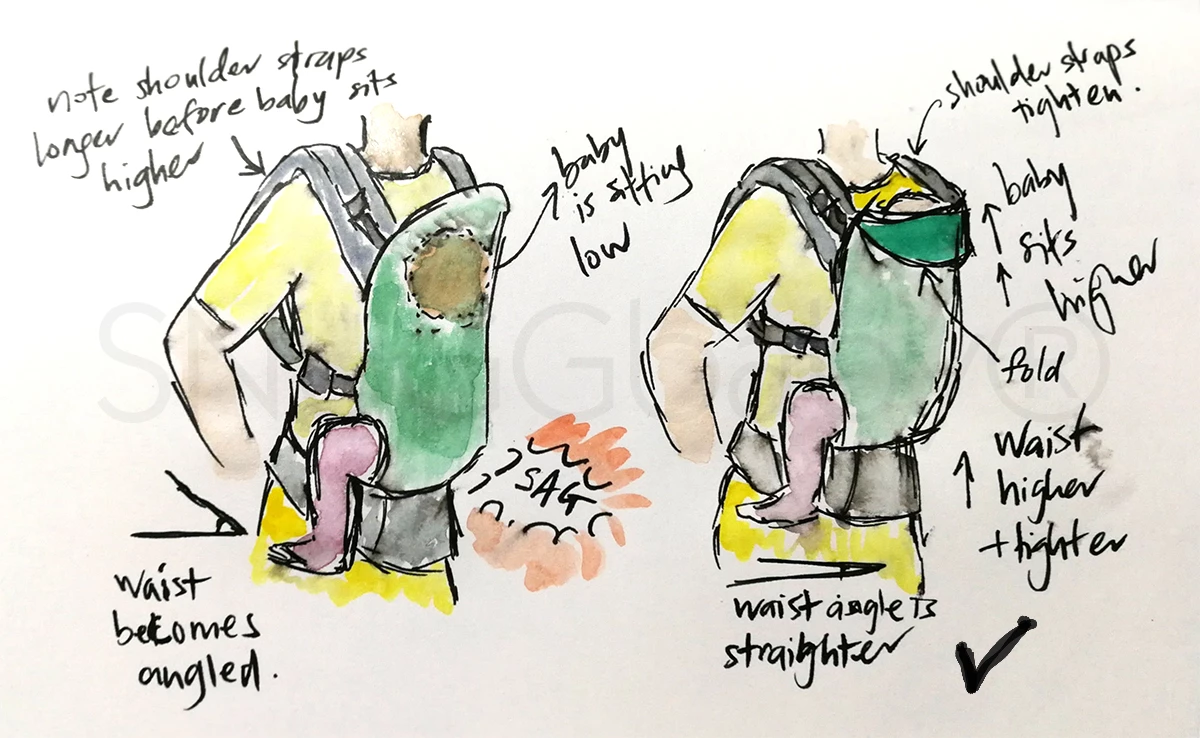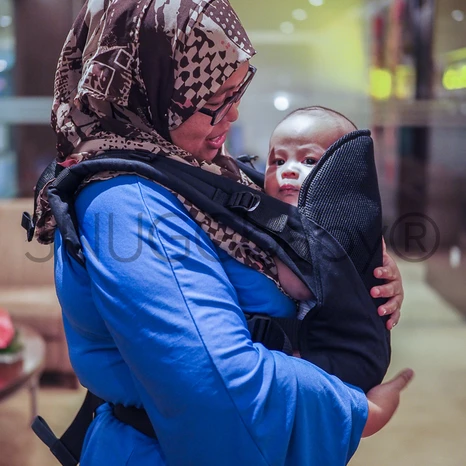Only because of lack of experience. Never because we are careless or unwilling to learn.
With a few trials, it will become second nature and having a carrier would really be like having an assistant or an extra set of hands.
I have assisted many new parents using carriers and slings for the first time but where my help usually needed is with the Stork Baby Carrier because that's usually what parents seek when they come to us. So in this article, that's what I'll mostly write about. I wouldn't say that these little mistakes may result in devastating consequences. It is meant for you to see if there's anything that you can do to achieve ideal positioning, prevent muscle sores, acquiring the maximum benefits and comfort of your baby carrier that has been designed to make you and your baby most comfortable. If you have any issues or any questions at all, feel free to ask in the comments below and if necessary I'll write up another post.
1. Waist straps too loose
Buckle it up, pull the straps tight and snug. The waist should feel like a yummy hug, the carrier shouldn't budge easily or rotate, let alone rotate around your waist. Make sure the panel is also placed centre. Check in the mirror if you aren't sure.
Wearing the waist straps snugly will do you much better in terms of comfort and posture.
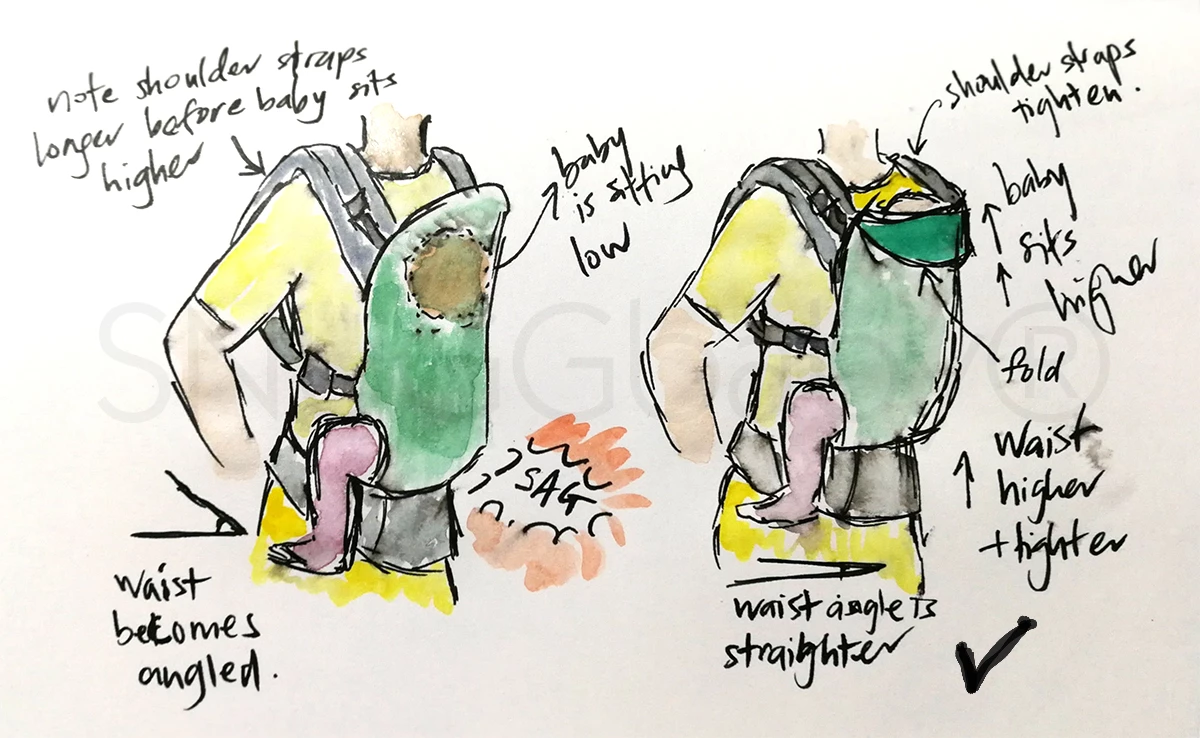
2. Waist straps too low
3. Baby not seated centrally
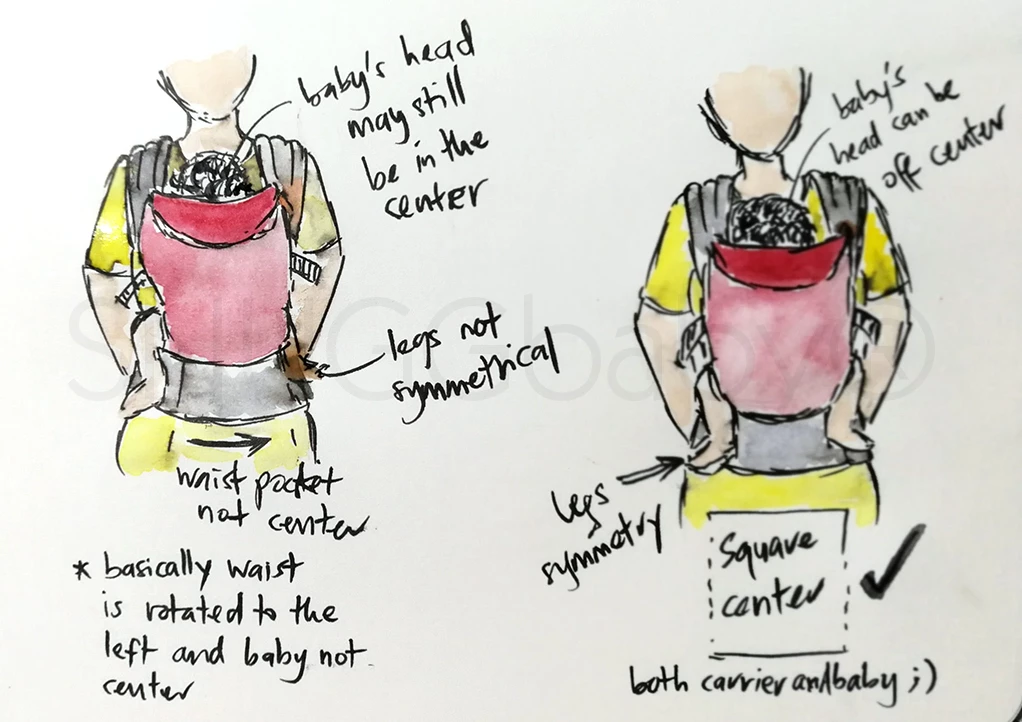
When you first try out a carrier, we usually advise you to try when the baby has had enough to eat, sleep, clean diapers and calm. We suggest that someone is with you to keep an eye on the baby while you are fiddling with the straps. Having a soft landing like a bed or sofa certainly helps boost confidence. It would be great to have a mirror too! Firstly, you can ensure that the carrier is centre on your body. Hold your baby in the tummy to tummy position by making sure that he is also centre. Then only pull up the body panel to cover the baby's body.
4. Baby not getting a deep seat
Don't straightaway pull up the shoulder straps before you cover the baby's bum with the body panel. By pulling up the shoulder straps too soon, the baby's bum will not fill up the bottom part of the baby carrier nicely.
Getting a deep seat is important in a carrier to ensure the baby is able to sit with knees above his bum. This encourages normal hip development for babies below 6 months of age. When the baby is deeply seated forming an M position, this helps the baby back being well supported in its natural position which is slightly curled and not forced to be straight.
5. Shoulder straps too tight
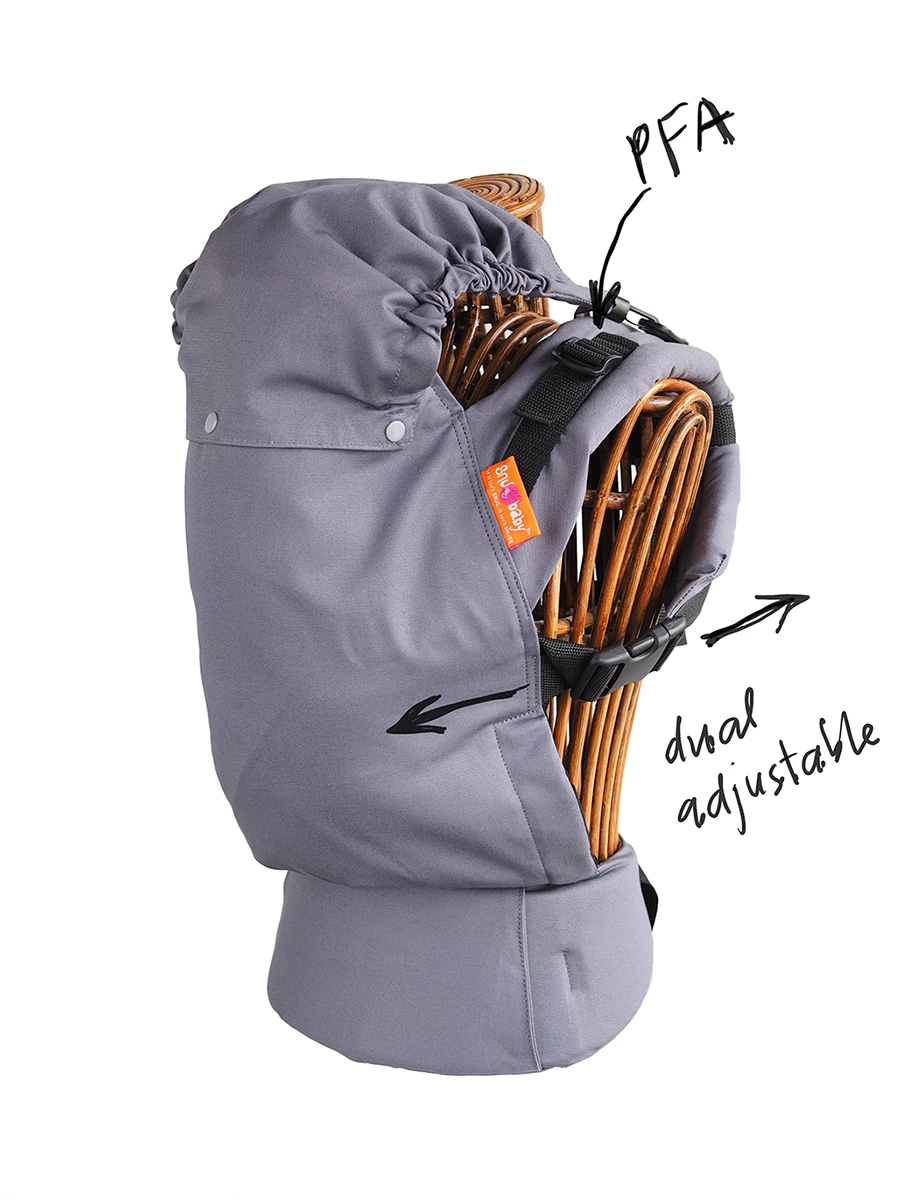 Side buckles (shoulder straps buckles) and PFA
Side buckles (shoulder straps buckles) and PFAMost carriers these days would have dual adjustable buckles on the sides. This allows parents to easily loosen or tighten the straps from the front or from the back. When you try out the carrier for the first time, let's say you are trying out front carry for the first time, make sure you leave some slack towards the front side of the side buckles (shoulder straps buckles) so that later on, you will be able to tighten this part further for a snug fit. However, if you find that you have already tightened it to the end and still feeling like the shoulder straps still loose, you can still tighten the petite-fit adjusters/PFA buckles (the short straps at the shoulder-body panel joint), you may also have someone to assist you with tightening the back part of the side buckles (you can also do it yourself but the angle may be a bit challenging). Will be easy with some practice.
6. Chest straps too high and/or too wide
From general observation this can happen when baby is worn straightaway with carrier from the box (without prior adjustments), or when mom passes the carrier for dad to use without adequately loosen the straps.
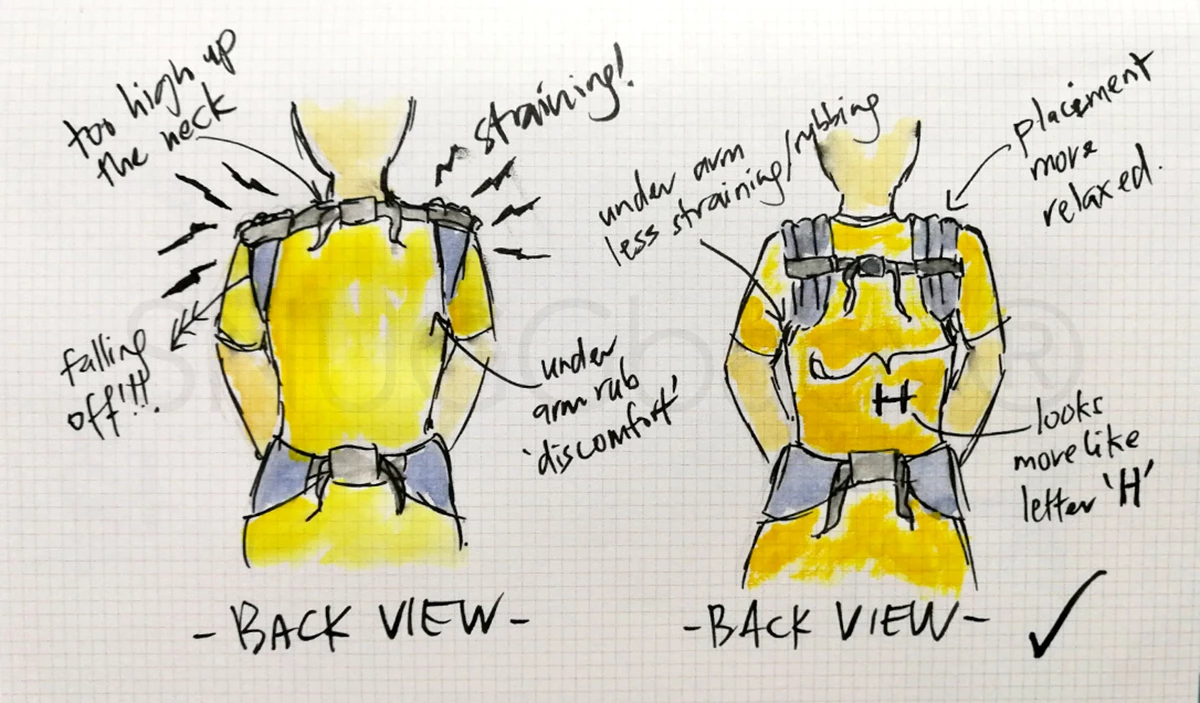
The shoulder straps need to be loosened a bit to make it placed more relaxed ON the shoulders. Then the chest straps are clipped just to keep them from sliding off. You will see if you are wearing the carrier ideally when viewed from behind. This is how it looks like when there is unnecessary straining of the shoulder straps versus when they are properly placed. Note that the chest strap moves along railings, you can adjust how high it goes on your back. As a general guideline, you want them as low as possible but still reachable if you were to wear the carrier when you are alone with the baby.
7. Baby's hands in awkward position
After we put on the carrier properly, obtained the sweet spot for both wearer and the baby, sometimes we look down and a bit puzzled thinking 'where should baby's hands be?'. For younger babies, the best position for their arms is right in front of them, pressing against our chest. In an active state, the baby will have greater awareness and he will be able to actively press against our body. This helps with the baby's development.
I wouldn't worry about older babies, they are strong enough and will decide where they want their arms to be. To allow a little extra freedom they can choose to hang one or two arm out of the carrier depending on how strong their torsos. You can assist them with this. If they fall asleep, it is best to tuck their arms back into the carrier as this will keep your centre of gravity closer to your body and make you feel more steady walking around.
- Take short breaks. Carrier makes baby feel weightless but still, your muscles are working harder to carry the additional weight. Sit down, give a good stretch, loosen up, remove the baby from the carrier if necessary every 30-45 minutes perhaps?
- The safest place for a baby when travelling in a car is a properly installed car seat.
- Breastfeeding and babywearing are 2 different skills that you and your baby need to be good at separately before attempting to do both at the same time. Very useful skill when combined but it is encouraged that breastfeeding is to be done in a calm and relaxing manner, in your most comfortable breastfeeding position.
- Dress baby lightly and avoid thick denim and layers when going out and about with baby especially in our weather. One-piece full body suit (the one that covers down to the little toes) looks totally adorable, but it may pull on the baby's leg and give baby unnecessary pressure on baby's legs when placed in the carrier.
Do you have some tips for newbie babywearers? Drop a line below!
Pictures from SNUGGbaby's Instagram
Illustrations by Liza Yaakup @Callizgraphy

